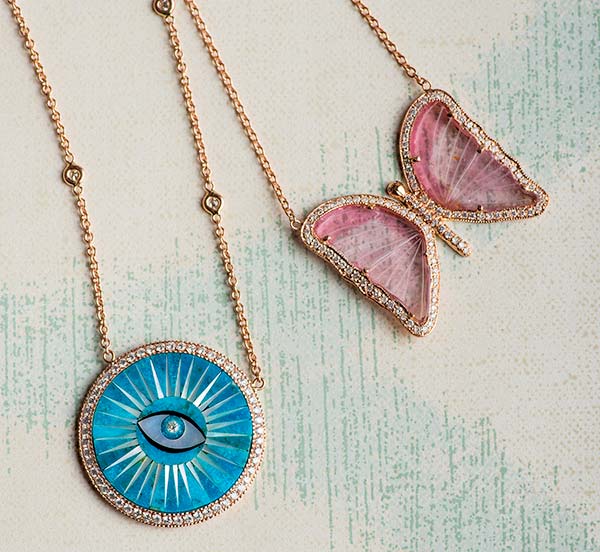
The key to Marissa Collections’ success (and six-figure sales) is connecting clients directly with their favorite jewelry designers

Since 1975, Marissa Collections has been synonymous with designer fashion in southern Florida. The now-sprawling boutique was founded by co-owners Marissa and Burt Hartington as a fashion oasis that introduced emerging designer collections from all over the world to the fashion-curious in famously affluent (but actually quite small) Naples, Fla.
Over the past decade, the boutique has become equally famous for its superb curation of fine jewelry, which is focused on designer-driven brands with intentionally small distribution. The only place in Naples to buy rarefied collections from the likes of Irene Neuwirth, David Webb, and Foundrae is Marissa Collections. Burt and Marissa now handle the apparel side of the business, while the couple’s son, Jay Hartington, spearheads the jewelry side together with jewelry operations director Rachel Curran. Just a decade ago, jewelry composed less than 1% of revenue; now it accounts for around 50% of the store’s total sales.
“It’s been pretty meteoric, how fast jewelry’s grown for us,” says Jay, who with Curran has been focusing on the store’s digital channels with renewed gusto since the COVID-19 outbreak. “But it really makes sense, right? That’s the way people shop.… They buy jewelry to go with other things.”

How did the store first get into fine jewelry?
My mother and our team began talking about it, and we would do a trunk show here and there. But right out of the gate we went for nontraditional designer fine jewelry. We started very early on with Irene Neuwirth, and both our businesses have grown up together. We also do well with David Webb, Sidney Garber, Nikos Koulis, and Fernando Jorge.
How has the pandemic changed the way you’re doing business?
We knew immediately that we needed to invest even more time and effort into our website and social media platforms. We focused our efforts to [create and post] unique content—not just another picture of a piece of jewelry. We started doing Instagram Lives with the designers and in-house styling videos with a concentration on educating the consumer.
What are the biggest challenges you feel jewelry retailers are facing in this second half of the year?
The supply chain could create some serious problems with being able to deliver newness to clients. We have a very loyal and discerning clientele, versus relying on walk-in traffic, that looks to us to educate and present new designers and collections. Also, in-store trunk shows are a considerable part of our overall business. We are now pivoting to virtual trunk shows and events to fill this void. In the fall, we look forward to combining both the virtual and in-store trunk show models.
You call your sales associates “stylists”—why?
We promote the mixing and matching of multiple designers. We don’t have departments. If you work in the store, you know the whole store. Our cases are laid out [so] that you stand in front of them, and the reality is that this makes it easier to put jewelry on someone. And everyone who works in the store is required to have taken the GIA Applied Jewelry Professional program, too. Not just the stylists, but everyone.
The stylists really are a part of their clients’ lives. They know when their children graduated from college and things like that. It’s like being part of someone’s house team. The idea of working with someone that closely is you’re helping to progress someone’s closet, so they’re not just buying the same thing over and over. You’re helping them find new things they love.
How does the store stand out from its local competitors?
We have an annual jewelry photo book that we shoot in-house—it’s 140 pages, and it just features jewelry. We send that out to clients, and we use the images throughout the year for marketing. Rachel plans a lot of out-of-store experiences: We took a small group of clients to David Webb in New York City, and we’ve also taken clients to Kwiat, Irene Neuwirth, and Todd Reed. At the end of the day, we’re matchmakers. We’re constantly trying to find ways for people to be able to interact more with the designers.
(Curran and Hartington: photography by Michael Owen)